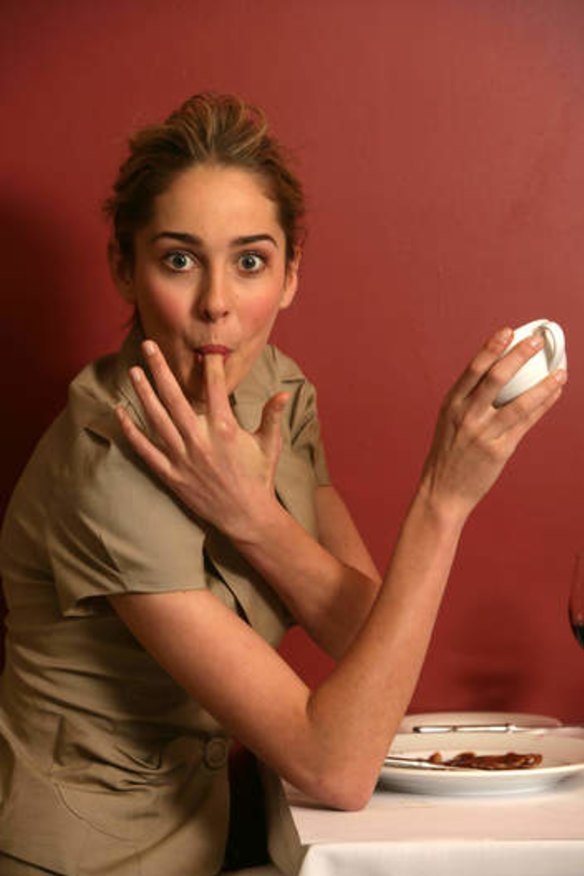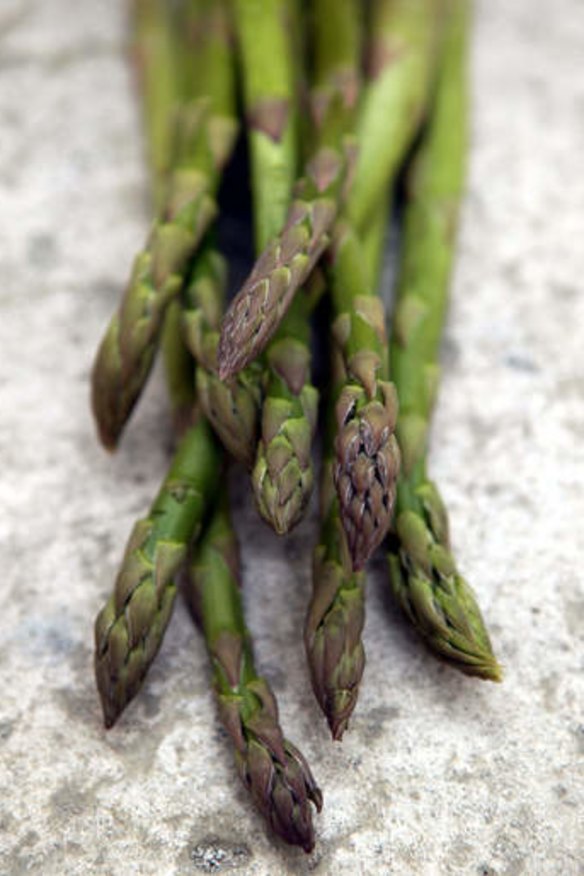Elbows on the table: when is it OK?

Since you brought up table manners last week, is it OK to put your elbows on the dining table? G. Fallows
Yes, but never extend this liberty to your knees. According to etiquette experts, while it is considered gauche to have one's elbows on the table while you have you knife and fork in your hands, it is acceptable to have one's elbows on the table at other times. For example, it is difficult to listen to the person on the other side of the table without your elbows on the table. However, for the sake of other diners, keep your elbows close to your body and don't flap them about like a seagull.

What is the correct way to eat asparagus spears? M. Lee
With your mouth. Which reminds me of late-19th-century advertising campaigns for bananas. With the advent of fast refrigerated shipping in the late 1890s, a new industry for bananas was established. One of the stumbling blocks was to get a puritan public to put something shaped like a banana in their mouths. Advertisers played the innocence card and used images depicting bananas as a healthy food for growing children. But I digress. When asparagus is served as part of a meal, use your knife and fork and cut the spears into small pieces and eat from the fork. If it is served on a platter with melted butter or a sauce, using your fingers, take the spear from the base, roll it through the sauce and nibble it from the tip down, returning the tougher end of the spear, if untrimmed, to your plate.
P.S. We will cover the many queries on the phenomenon of postprandial asparagus water-passing odour next week.
I am trying to find a recipe for mock chicken. V. Lyons
I do a lot of research to answer your questions each week, trawling through my library and head off into digital archives for hours at a time, but for this one I had to pull out the big guns: Mum, Robyn Ethyl Cornish. Mock chicken was one of her party favourites, which she would spoon into vol au vents before slipping out to one of those '70s Ben Ean and Neil Diamond fuelled parties. Mock chicken was popular back then because real chicken was so expensive to buy or, for country folk like us, so gruesome to gut. She says finely chop half a white onion and soften it in a little butter in a small saucepan with a rasher of finely chopped bacon (optional). Meanwhile, skin a tomato by making a cross in the bottom with a sharp knife and place it in a bowl of boiling water for a few minutes. Remove, peel and finely chop and add this to the onion and cook until soft, and season a little with salt. Add a cup of soft white breadcrumbs, a pinch of dried thyme leaves and a few tablespoons of finely grated cheese. Mix well. Check the seasoning and allow to cool. Use in sandwiches, as a dip or spoon into your favourite vol-au-vent shells.
What causes the deep-yellow layer on the outside of a block of butter? A. Sprague
Light and air cause this darker layer of butter on the outside and you'll most likely find this when unwrapping butter packed in parchment paper. The dairy industry calls it ''primrosing'', but it is actually the butterfat oxidising. It is not harmful, but it is a precursor to rancidity. Rancid butter is not harmful to eat, but does diminish the taste of food prepared with it.
Letters
A recent query about Meyer lemons prompted this response from Mrs L. Daley. ''I am now 77. I have a photo of my late father with me as a young baby of six months in the backyard of our seaside home planting the Meyer lemon tree. I still live here and the Meyer is still producing wonderful lemons every year. I give them willingly to family, friends and as it is said, 'One never leaves the house without a bag of lemons, even if one has never requested them'.''
Send your queries to brainfood@richardcornish.com.au
The best recipes from Australia's leading chefs straight to your inbox.
Sign up- More:
- Brain food
